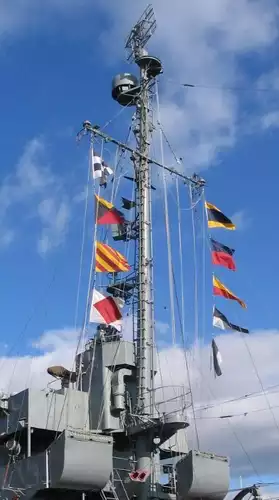Pompous Europeans and Naval Codes
by Ed Sawicki - April 2022
I was just researching early naval codes to settle some confusion about U.S. and Japanese naval codes used during World War II. U.S. codebreakers broke enough of the Japanese Naval JN-25 code to be credited with the U.S. sinking four Japanese aircraft carriers during the battle for Midway Island in June 1942, thus turning the tide of the war in the Pacific.

The lineage of JN-25 and its U.S. counterparts include naval semaphore codes that involve ships communicating using signaling flags that are either displayed on lines hanging from masts or sailors waving them. One of the more secure of these semaphore codes was developed by Admiral Bertrand-Francois Mahe de la Bourdonnais of the French East India Company. His code had the flags and their placement represent numbers instead of a message. A codebook was used to translate the numbers into the message. This was more secure than other semaphore codes of the day.
The French never adopted his creation for a reason that's so pompous yet typical of the era: The Admiral was “of insufficient noble birth.”
British admirals also ranked noble birth very highly. However, some of those who did have the proper noble births adopted and improved the French admiral's technique to the benefit of the British East India Company.
Additional reading
Wikipedia: Bertrand-François Mahé de La Bourdonnais